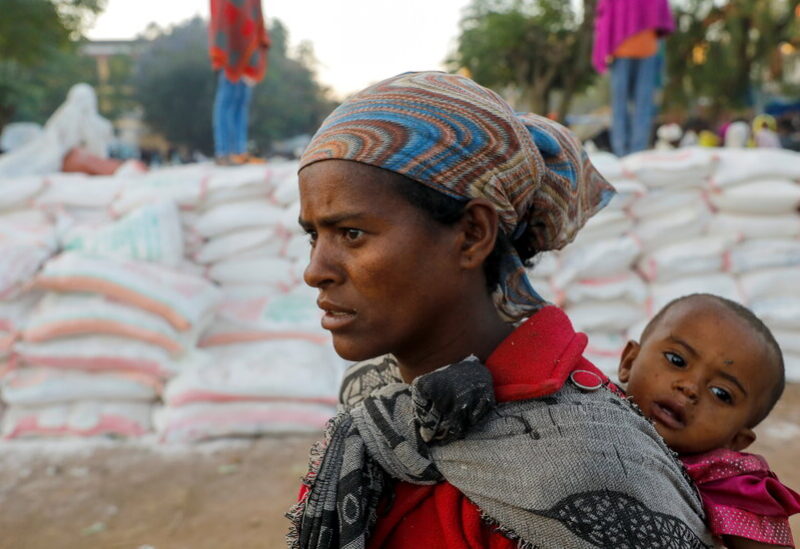
Ethiopian woman
According to a study by United Nations agencies and relief groups, more than 350,000 people in Ethiopia’s Tigray are suffering from famine, with millions more at risk, according to a report blaming conflict for the worst catastrophic food crisis in a decade.
“There is hunger currently in Tigray,” declared United Nations Aid Chief Mark Lowcock on Thursday, following the release of the Integrated Food Security Phase Classification (IPC) analysis, which the IPC cautioned had not been accepted by the Ethiopian government.
“The number of people living in famine circumstances… is larger than it has been elsewhere in the world since a quarter million Somalis died in 2011,” Lowcock added.
Most of the 5.5 million people in Tigray need food aid. Fighting broke out in the region in November between government troops and the region’s former ruling party, the Tigray People’s Liberation Front (TPLF). Troops from neighboring Eritrea also entered the conflict to support the Ethiopian government.
Thousands of civilians have been killed, and more than 2 million people have been displaced from their homes in the mountainous terrain as a result of the fighting.
The IPC’s most severe alert, which begins with a catastrophe warning and progresses to a declaration of famine in a territory, is phase 5, which begins with a catastrophe warning and progresses to a declaration of famine in a territory.
According to the IPC, more than 350,000 people in Tigray are in phase 5 of the disaster. This signifies that famine is affecting households, but only about 20% of the population is affected, and fatalities and starvation have not reached famine levels.
“This severe crisis results from the cascading effects of conflict, including population displacements, movement restrictions, limited humanitarian access, loss of harvest and livelihood assets, and dysfunctional or non-existent markets,” the IPC analysis found.
The Ethiopian government disagreed with the IPC’s findings, claiming that food shortages are not serious and that aid is being supplied.
At a news conference on Thursday, Ethiopian Foreign Ministry spokesman Dina Mufti said the government was providing food aid and assistance to farmers in Tigray.
“They (diplomats) are comparing it to the Ethiopian famine of 1984 and 1985,” he claimed. “That’s not going to happen,” says the narrator.
In a joint statement, the United States and the European Union demanded a quick cease-fire, the evacuation of Eritrean troops, and humanitarian access to Tigray. It warned that the situation might destabilize the Horn of Africa area as a whole.
“TAKE ACTION RIGHT IMMEDIATELY”
For famine to be declared, at least 20% of the population must be suffering extreme food shortages, with one in three children acutely malnourished and two people out of every 10,000 dying daily from starvation or from malnutrition and disease.
In the last decade, famine has been declared twice: in Somalia in 2011 and in parts of South Sudan in 2017.
“Most parts of Tigray would be at risk of famine if the violence develops further or humanitarian assistance is hampered for any other reason,” the IPC said, adding that even if aid deliveries are stepped up, the situation is projected to worsen until September.
Linda Thomas-Greenfield, the United States’ ambassador to the United Nations, described the situation as a humanitarian catastrophe.
“This is not the kind of disaster that can be reversed,” she told a U.S. and EU event on Tigray on Thursday. Referring to a previous famine in Ethiopia that killed more than 1 million people, she said: “We cannot make the same mistake twice. We cannot let Ethiopia starve. We have to act now.”
A ceasefire, unrestricted assistance access, and more money to expand relief operations are all needed, according to World Food Programme Executive Director David Beasley, to prevent millions of people in Tigray from dying of starvation.
The IPC study could be worse, according to documents from a meeting of UN agencies on Monday obtained by Reuters, because “they did not include individuals in Amhara-controlled areas” in western Tigray.
“We don’t have any food scarcity,” Mitiku Kassa, the head of Ethiopia’s National Disaster Risk Management Commission, said on Wednesday.